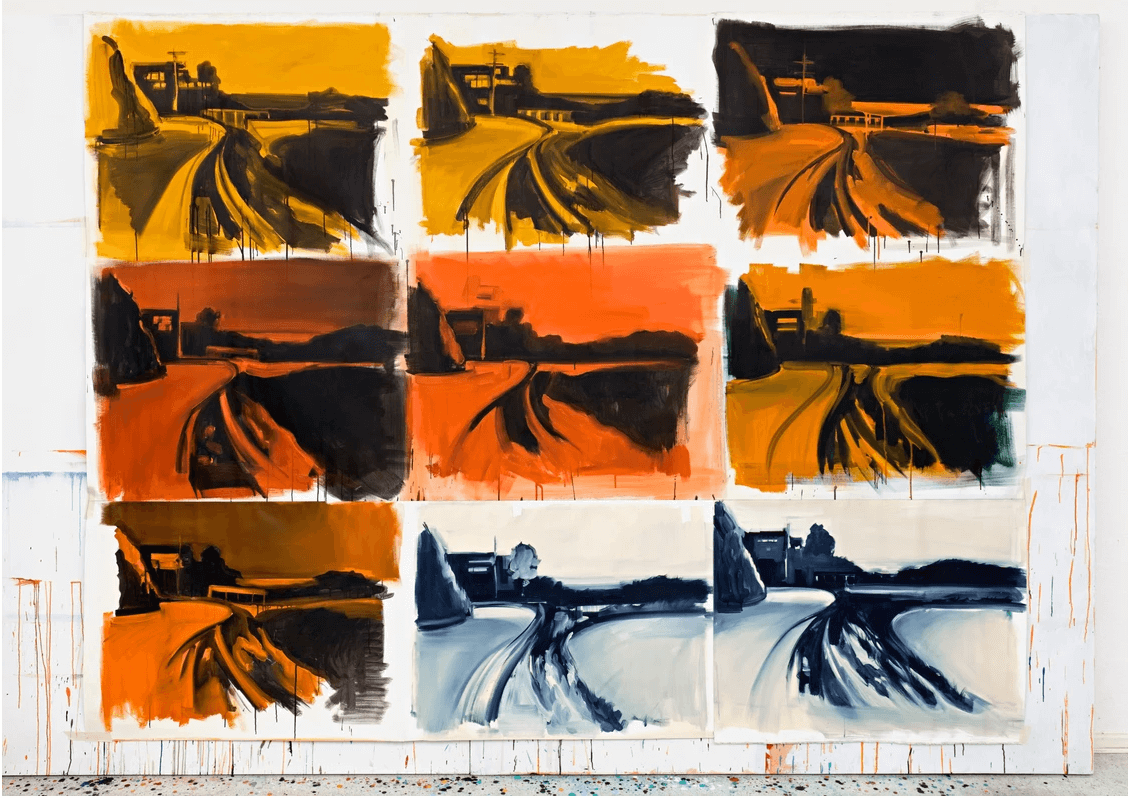Roman Lipski
Roman Lipski is a Berlin-based painter who is currently exploring the potential dialogues between artist and an artificial intelligence.
Intro:
Roman Lipski is a Polish-born painter who has lived and worked in Berlin since 1989. His celebrated art has been exhibited in numerous museums all over the world – such as the Nagoya/Boston Museum of Fine Arts in Japan, the National Art Museum of China or the Elgiz Museum of Contemporary Art in Istanbul. Furthermore, his work is part of several art collections such as the Marx Collection at Hamburger Bahnhof in Berlin, the Alex Katz Foundation in New York, and the collection of Boston Museum of Fine Arts. In his present project Unfinished, Roman Lipski develops in collaboration with YQP & Birds on Mars the first digital muse for artists.
Selected AI Artworks:
Unfinished
Unfinished is the first and unique project that stimulates an artist's creativity through the creation of artificial intelligence. The complex system is able to imitate Roman Lipski’s way of working and generates an infinite amount of original pictures.
Videos:
Lipski on using Artificial Intelligence:
Can you explain your series Unfinished?
“Unfinished is the first project that stimulates an artist's creativity through the creation of artificial intelligence. Along with the artist collective YQP and the company Birds on Mars, I developed the idea of the interaction between man and machine on an inspirational level – acting at the intersection of science and technology. Based on the dialogue between artist and computer, the artificial intelligence functions not only as a creative figure, but also as an ingenious source of inspiration - my new muse. It inspires, provokes and challenges me. At the core of the artificial muse is a neural network. The complex system is able to imitate my way of working and generate an infinite amount of original pictures. The images created by the network in turn inspire and encourage me to constantly develop my own artistic language. For over three years the system has supplied me with new compositions, perspectives, and themes. Each new artwork I create is fed back into the system. Based on this new data, the machine called A.I.R. (Artificial Intelligent Roman) continuously produces new pictures as source for inspiration.”
How has AI impacted your creative practice?
“For over three years I have been in a constant dialogue with my artificial intelligent system. Through the course of the project Unfinished which I developed with Data Scientist Florian Dohmann, my artistic language has fully transformed and it has let me perpetually explore uncharted ways to express myself. The AI has become a machine in search of diversity, inspiration, and transformation. The algorithm has become my new muse. I used to paint figuratively until I went through a creative crisis. My narration came to an end and I was looking for a new expression. I always wanted to paint abstractly and my artificial muse helped me to dissolve the forms of my own motifs and give the colours an autonomous power. Step by step I developed my new style and developed my own artistic potential.”
What excites or worries you most about AI?
“I want to break the idea of the eternally suffering artist. I don't deny that crises also play a role in our own artistic development, but if we live in times when new technologies lead people to make their profession more productive and creative, as in my case, then we should embrace the opportunity. My experience has shown me that every AI is as good as the individual that trains it and the data that the human being feeds in. Artificial intelligence doesn't worry me that much, it can only be misused. The systems are a very capable instrument but the responsibility for their "failure" lies with the human being. The use of artificial intelligence in art does not mean that we lose anything. I see it rather the other way round: artificial intelligence gives us new perspectives and possibilities to grasp reality and to express ourselves in a new, unprecedented way. I see my artificially intelligent muse as a great support for my human talent, as a source of inspiration comparable to nature. To be creative, I don't have to go through crises anymore.”
What specific AI / machine learning technologies does you use?
“At the core of the Artificial Muse are neural networks. Based on latest in Deep Learning and Generative Adversarial Networks this cloud-native system is able to imitate my way of working and generates an infinite number of unique images that encourage me to constantly re(de)fine and develop my own artistic language. In 2018 a 2nd generation of the Artificial Muse came to life. The idea was to develop a new tool, an "instrument", seamlessly integrated into my studio environment. The next gen version consists of different data sets and algorithmic models as well as a multitude of sensors, including webcams. All these components - similar to a modular system in music production - are interconnectable to form loops and pipelines, a fluid network of inspiration, communication, a unique kind of an intelligent fabric woven into the life of a painter.”
Lipski’s Selected Exhibitions:
2019 AI for Good Global Summit, Geneva
2019 Gestaltungsmaschine, STATE Studio, Berlin
2018 A.I.R. Sophisticated Art, München
2018 Spannungsfelder, Berlin
2018 Nahstellen, Kunstverein Kärnten, Klagenfurt
2018 Beyond Festival, Zentrum für Kunst und Medien, Karlsruhe
2016 STATE FESTIVAL 2016 - Festival for open science, art and society, Berlin Evening of Artificial Creativity
Lipski’s Selected Speaking Engagements:
2019 Big-Data AI Summit, Berlin
2019 Google Opening Berlin
2018 Beyond Festival - Future Design, Karlsruhe
2016 STATE Festival, Berlin
2016 TEDxMünster
Lipski’s Selected Press:
2019 Artificial Intelligence and Art, Deutsche Welle
Learn more about Roman Lipski:
Lipski’s website: http://www.romanlipski.com/
Lipski’s Instagram: https://www.instagram.com/lipskiromanstudio/
Lipski’s Facebook: https://www.facebook.com/roman.lipski.39


